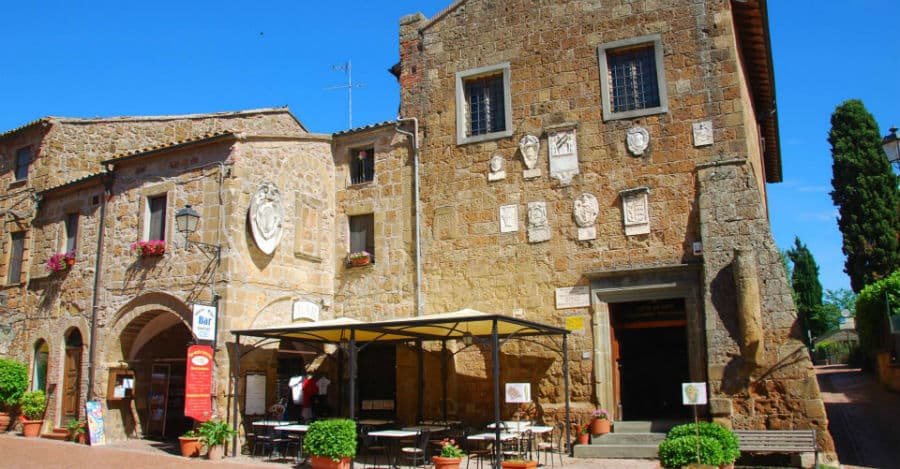Important Etruscan center, medieval and renaissance, Sovana rises on a Poggetto that bears his name, a small valley which develops between the hills of the Albegna and Fiora, in the heart of the Tuff area on the left bank of the river Fiora. The territory is affected by the presence of numerous water courses with a torrential regime. The village counts a little more than a hundred inhabitants.
Suana was an Etruscan center, that the conquest of Vulci onwards (280 a.C.) underwent a gradual process of Romanization, culminated with the creation of the town hall with the granting of the roman citizenship to the italic. In the V century is already documented as a bishopric. The current historical center developed in the course of the Middle Ages in the vicinity of the preexisting etruscan necropolis, under the control of the Aldobrandeschi family, who built a castle around the year one thousand. In the medieval era also became a free commune and gave birth to Hildebrand of Sovana, who later became Pope Gregory VII;[3] was also the capital of the homonymous County. At the end of the thirteenth century was inherited by the Orsini following the same destiny of Sorano and Pitigliano until the fifteenth century, the period in which the center was conquered by Siena. In the middle of the XVI century the definitive fall of the Republic of Siena brought Sovana in the hands of the Medici who inglobarono in the Grand Duchy of Tuscany. The doctors tried to repopulate the village, in a state of decay after the plague epidemics, with settlers coming from Greece: the attempt was useless, in 1702 are surveyed to Sovana only twenty-four persons.
The Palace of the archive, located in the central Piazza del Pretorio, which takes its name from the homonymous (and coeval) Palace, dating back to the XII century and was home of giusdicente after 1411. In 1676 is already attested as seat of the archive of the Community. On the facade is placed a clock. The walls of Sovana are attributable to three different historical periods. The first to realize a walls to defend the village were Etruscans, starting from the VII century B.C.; thereafter, between the XI and the XII century, were constructed the medieval walls, works of the Aldobrandeschi, in tuff; finally, in the course of the XV and XVI century, were raised the Renaissance walls, the work of the sienese and subsequently renovated by doctors. The Rocca Aldobrandesca, sort on existing structures of the Etruscan age around the year thousand as seat and symbol of the power of the Aldobrandeschi family, remained abandoned toward the end of the XIII century, to then be restored in the course of the XV century by the Sienese. With the annexation to the Grand Duchy of Tuscany in the 16th century, Cosimo I de' Medici commissioned some renovation work that does not, however, prevented the subsequent abandonment and the consequent degradation of the structure. Clearly visible today are the monumental ruins of the fortress.
Sovana is an interesting center of culture as a place of museums and archeological paths in the nearby Etruscan areas. At the historic center is situated the Polo Museale of Sovana, set up inside the church of San Mamiliano, with exposure of the so-called "treasure trove of Sovana", and inside the Palazzo Pretorio with the info-point. The village is also one of the seats of the Archaeological Park City of tuff which includes inside the ancient necropolis, divided mainly into two sectors: the first includes the via cava of Cavone, Poggio Felceto, Poggio Prisca and Poggio settled, to the north of the Fosso Calesine and along the torrent Picciolana; the second includes the via cava di San Sebastiano, the necropolis of Sopraripa and the monumental tomb of the Siren, south of the Fosso Calesine and along the torrent Folonia.











